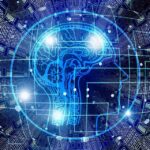Just a few days ago, we marked the inspiring occasion of Teachers’ Day. These educators, the unsung heroes and architects of society, tirelessly shape our futures. It’s our duty and privilege to provide every resource to elevate and simplify their monumental tasks.
With the onset of the digital age, teaching has transcended traditional classrooms. Artificial Intelligence (AI) stands at the forefront of this transformation, offering tools and solutions that can make educators’ roles both easier and more impactful. As we reflect on Teacher’s Day, it’s apt to explore how AI can assist teachers in their noble profession.
1. Personalised Learning:
One of the most significant challenges teachers face is catering to a diverse group of students, each with unique learning needs. AI-driven platforms can analyse each student’s strengths, weaknesses, preferences, and pace. With this data, AI can help create a customized learning path for every student, ensuring that each one receives the instruction they need when they need it. The result? Enhanced student engagement and improved outcomes. Gone are the days of one-size-fits-all. AI facilitates a dynamic, adaptive learning environment tailored to individual needs, bridging gaps, and accelerating progress.
Artificial Intelligence: The downfall of education?
Pillars, 12 others seek first wins as NPFL enters week 2
2. Automating Administrative Tasks:
Administrative duties, while essential, can detract from a teacher’s core objective: educating. Grading assignments, tracking attendance, and managing timetables often consume a significant chunk of their time. AI’s automation potential comes as a saving grace, taking over these mundane tasks. For example, AI-driven systems can grade not only multiple-choice tests but, with advancements, even essays to some extent. This automation ensures consistency, reduces human error, and provides teachers more time for student interaction and curriculum planning.
3. Intelligent Content Creation:
Crafting content that resonates with every student is a challenge. With AI, teachers have tools at their disposal that can generate smart content, including customized reading material, study guides, and problem sets. These tools are informed by pedagogical best practices and are designed to enhance learning experiences. For subjects like Math and Science, AI can even generate quizzes or flashcards that adapt difficulty based on student performance, ensuring consistent progression.
4. Virtual Tutors and Assistants:
The role of an educator extends beyond classroom walls. Students often require assistance after school hours, and while teachers strive to be available, there are limits. Enter AI-powered virtual tutors. These tutors, available 24/7, can offer homework assistance, answer queries, and provide additional study resources. This doesn’t diminish a teacher’s role but supplements it, ensuring students have support whenever they need.
5. Enhancing Professional Development:
Continuous learning is a hallmark of great educators. AI’s analytical capabilities offer a unique advantage here. By assessing classroom interactions, teaching methodologies, and even student feedback, AI can pinpoint areas where a teacher might improve. Moreover, based on these insights, AI-driven platforms can suggest tailored professional development opportunities, whether courses, workshops, or seminars. This kind of targeted growth strategy can lead to significant advancements in teaching techniques.
6. Early Identification of Student Issues:
The holistic development of students is paramount. Beyond academic performance, there are numerous challenges students might face, from emotional and psychological hurdles to learning disabilities. AI, with its data-driven approach, can detect anomalies in student behavior or performance. By flagging these early, teachers can collaborate with parents and counselors to ensure the student receives the necessary support.
7. Augmented Reality (AR) and Virtual Reality (VR) Integration:
The union of AI with AR and VR is ushering in a new era of experiential learning. Imagine a literature class where students can interact with characters from a novel or a geography lesson where they can virtually traverse the Amazon rainforest. These immersive experiences, powered by AI, enhance understanding, foster curiosity, and make learning genuinely enjoyable.
8. Data-Driven Insights for Curriculum Design:
Beyond individual student performance, AI can provide insights on the effectiveness of teaching materials and curricula. By analyzing aggregate student data, educators can discern which topics are well-understood and which require additional emphasis. Such insights can inform curriculum adjustments, ensuring it remains relevant and effective.
9. Language Translation Tools:
In multilingual classrooms or where students are non-native speakers, AI-driven translation tools can be invaluable. Real-time translation can ensure every student, regardless of their primary language, has access to the same information. This fosters inclusivity and ensures no student is left behind due to language barriers.
Conclusion:
The harmonious integration of AI in education presents a promising future. Rather than replacing teachers, AI seeks to empower them, amplifying their efforts and enriching the educational landscape. On this Teacher’s Day, as we laud the invaluable contributions of educators, it’s exhilarating to imagine a future where, with AI’s assistance, they mold minds with even greater efficiency and profound impact. The dawn of AI in education heralds a new era of empowered teaching and enriched learning.

 Join Daily Trust WhatsApp Community For Quick Access To News and Happenings Around You.
Join Daily Trust WhatsApp Community For Quick Access To News and Happenings Around You.


